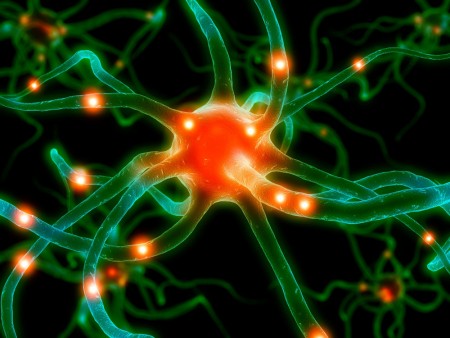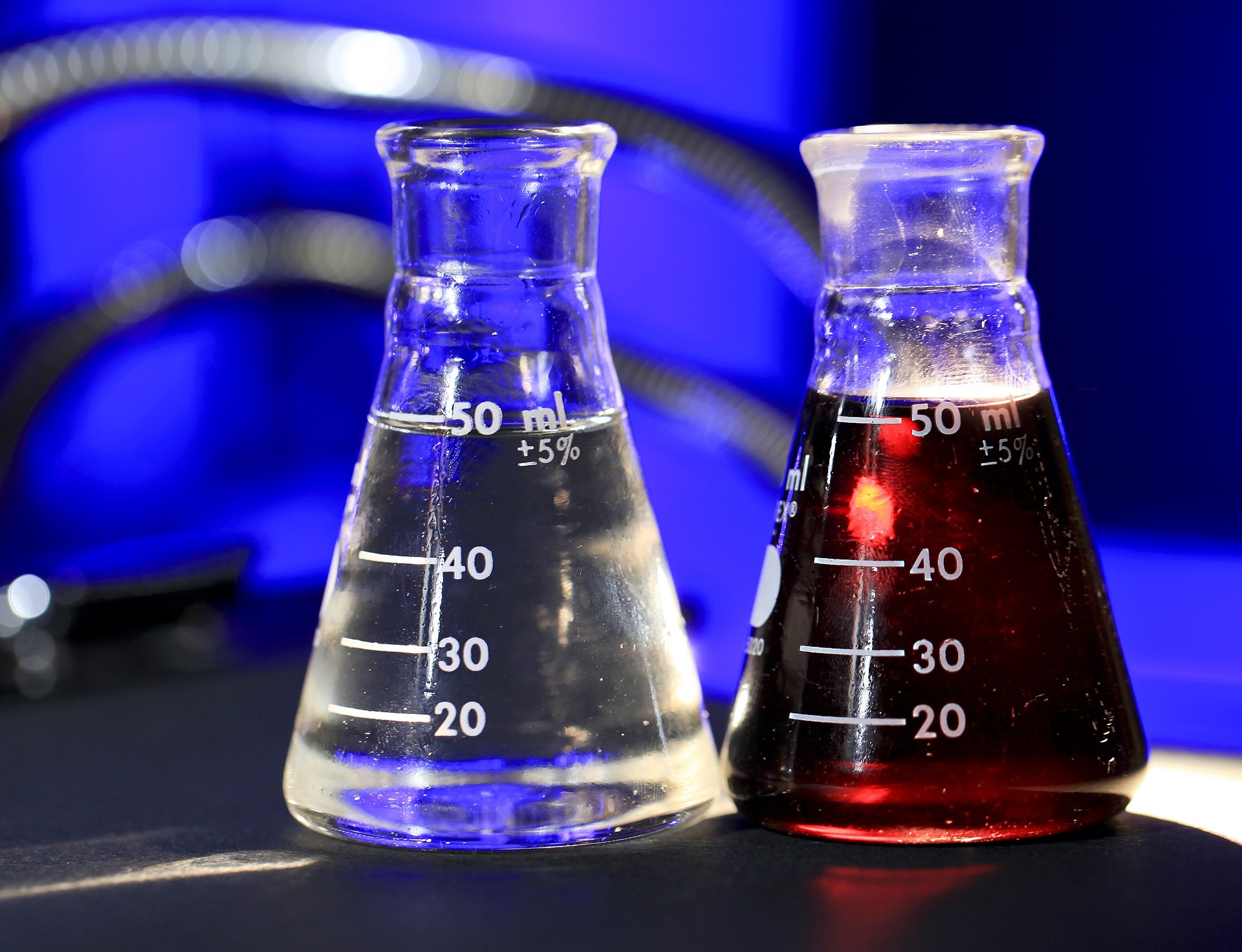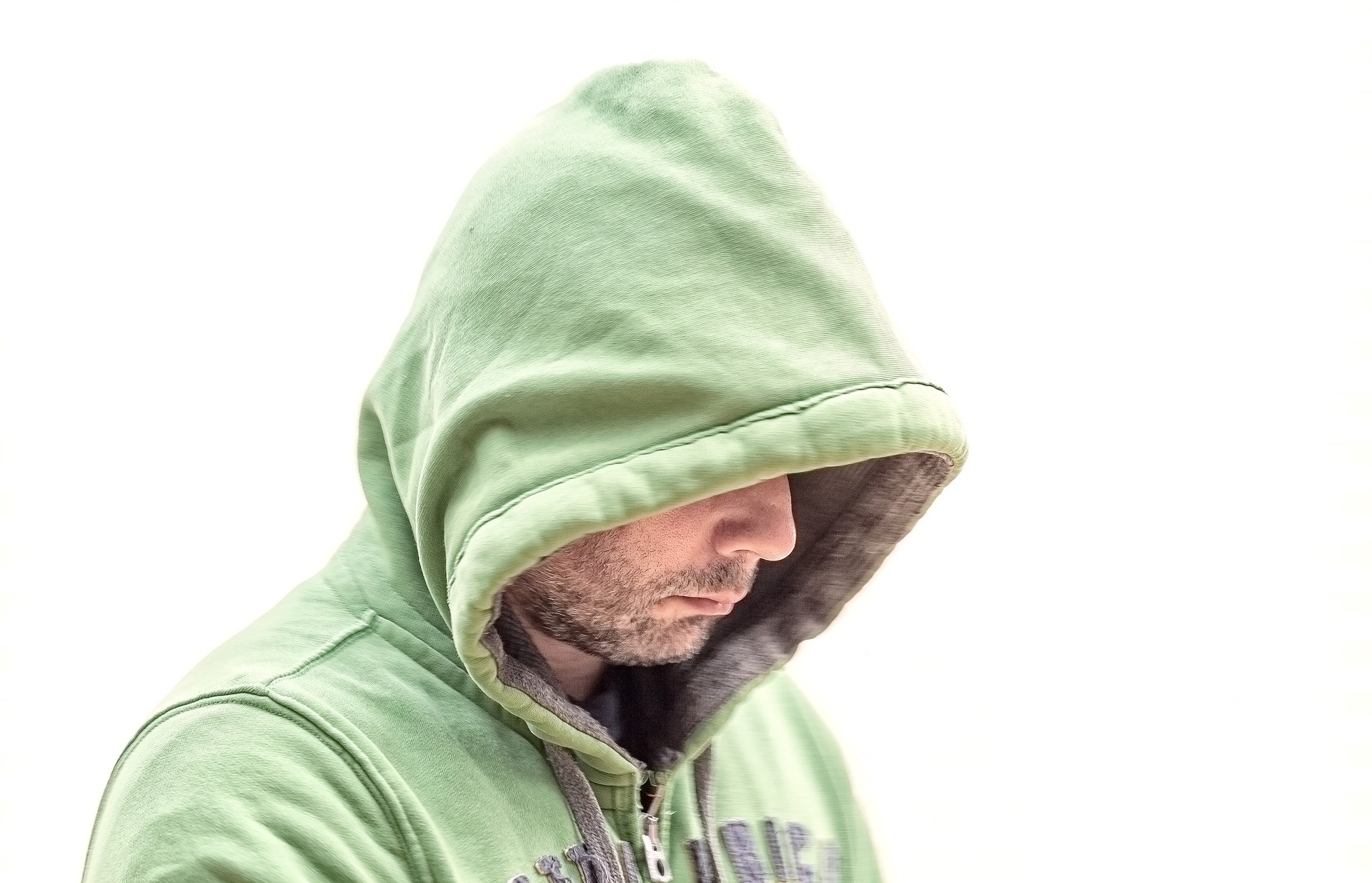Cannabinoids include THC, CBD, and synthetic versions of marijuana. Cannabis use disorder affects 1 in 10 adults who use marijuana.
Cannabinoids: THC, CBD, and Synthetic Cannabis
Cannabinoids are chemicals found in cannabis plants, including marijuana, that are appearing in an increasing number of consumer products. Recreational marijuana, CBD, and synthetic cannabinoid products are becoming legally available in more and more states. However, many people are unaware of the differences between the different types of cannabinoids and their varying health risks, including the risk of developing cannabis use disorder, or addiction.
In This Article:
- What Is the Body’s Endocannabinoid System?
- What Are Cannabinoids and Their Effects?
- What Are Synthetic Cannabinoids?
- What Are the Medical Uses of Cannabinoids?
- Is Cannabis a Gateway Drug?
- What Are the Risks of Cannabis Addiction?
- What Are Treatments for Cannabis Use Disorder?
What Is the Body’s Endocannabinoid System?
Endocannabinoids are chemical compounds that are naturally produced by the body.1 These compounds act as a kind of neurotransmitter, binding to cannabinoid receptors throughout the brain and nervous system.2 The body’s complex endocannabinoid system (ECS) helps regulate functions like mood, appetite, and sleep.3
The ECS also helps to control pain, inflammation, and damage caused by an injury.2
When your body recognizes a need for the release of endocannabinoids, it sends them to the receptors that need the most help. For example, if you are in pain, endocannabinoids may attach to ECS receptors around a nerve.3
Cannabinoids from outside resources such as marijuana, when consumed, also attach to the ECS receptors in your body.3
What Are Cannabinoids and Their Effects?

Cannabinoids attach to cannabinoid receptors in the body.
The cannabis Sativa plant known as marijuana contains more than 500 chemicals, with over 100 of them being cannabinoids. The two main cannabinoids are tetrahydrocannabinol (THC) and cannabidiol (CBD).
THC activates specific brain cell receptors that produce a feeling of euphoria. However, the effects of THC in marijuana are not consistent among users due to some people having genetic mutations in their body’s cannabinoid receptors.5 Two people can consume the same cannabis (marijuana) and one may have a relaxing, fun high, while the other may experience paranoia and fear.
Effects of THC may include:6
- Altered senses
- Impaired body movement
- Changes in mood
- Increased heart rate
- Impaired memory and problem-solving abilities
- Hallucinations (when used in high doses)
- Delusions and paranoia (when used in high doses)
- Psychosis (when using high-potency marijuana)
Long-term cannabinoid side effects from chronic marijuana use may include:6,7
- Permanent reduction in IQ when people start using marijuana at an early age
- Depression and anxiety
- Lung damage from smoking or vaping marijuana
- Heart-related problems, including an increased risk of heart attack
- Cycles of intense nausea and vomiting, known as Cannabinoid Hyperemesis Syndrome
- Lower birth rate and fetal problems due to marijuana use during pregnancy
- Decreasing fertility in both sexes
- Development of schizophrenia or other severe mental illnesses in people predisposed to these diseases
- Increased risk of motor vehicle accidents due to slowed reactions and coordination
- Worse educational and career outcomes
- Reduced life satisfaction
Cannabis products today have much higher concentrations of THC than decades ago. Today’s marijuana is at least three times as potent in its THC content than 25 years ago.7 In the 1970s, cannabis had an average THC concentration of less than 3%. Today, cannabis, including synthetic cannabinoid products, contain THC levels of up to 40%, increasing the risk of negative effects, including psychotic disorders.8
What adds to this risk is how many cannabis products are purposely made with a higher THC to CBD ratio. CBD may have a protective effect against the psychotic effects of THC. But that protective effect is lost when CBD levels are decreased in cannabis products. One study shows that THC:CBD ratios found in cannabis products in the U.S. increased from 1:14 in 1995 to 1:80 in 2014.9
CBD, the other main cannabinoid in marijuana, continues to gain popularity as a self-treatment for anxiety, chronic pain, neurological pain, arthritis, stress, sleep problems, and nausea. CBD is sold as edible extracts, oil-based capsules, topical lotions, and CBD-infused food products. By 2025, annual CBD sales are expected to reach $23 billion in the U.S.10
Healthcare leaders such as Mayo Clinic and Harvard Medical School say more research is needed to determine the safety of CBD.11,12
Use of CBD can cause side effects that include:12
- Dry mouth
- Diarrhea
- Irritability
- Reduced appetite
- Fatigue and drowsiness
- Interactions with blood-thinning medications, such as coumadin
Before using CBD products, talk to your doctor.
What Are Synthetic Cannabinoids?
Synthetic cannabinoids are not authentic cannabinoids. They have that name simply because the chemicals attach to the same cannabinoid receptors in the brain, but they do not create the same effects. In fact, they may affect the brain in different ways than marijuana does.13
There are hundreds of different synthetic cannabinoid chemicals used to make synthetic marijuana products sold online, in vape shops, and in stores that sell herbal supplements.13
Synthetic cannabinoids are more dangerous than cannabinoids derived from the cannabis Sativa (marijuana) plant.13 Synthetic cannabinoids are created in labs with no standards for safety. The amount and type of cannabinoid chemicals can vary between batches, and products may be contaminated with other drugs or toxic chemicals.13 Many synthetic cannabinoid compounds have been placed on the Schedule 1 list of controlled substances due to their high potential for abuse with no accepted medical use.14 Yet products made with these compounds remain unregulated.
Calls to poison control centers related to synthetic cannabinoid use have increased significantly in the U.S. in recent years.14
Synthetic cannabinoids can cause the following health effects:13,14
- Mood swings that can include anger, hostility, and violence
- Trouble concentrating and staying on task
- Confusion
- Drowsiness
- Hallucinations
- Psychosis
- Suicidal ideation
- Breathing problems
- Digestive problems
- Heart attack or stroke
- Seizures
- Organ failure
- Muscle weakness or damage
- Overdose or death
Chronic use of synthetic cannabinoids can also lead to substance use disorder and addiction.13
What Are the Medical Uses of Cannabinoids?
There are no medical uses of the cannabis plant that have been approved by the Food and Drug Administration (FDA). However, the FDA has approved several drugs containing individual cannabinoids:
- A purified form of CBD is used in the medication Epidiolex for the treatment of seizures associated with two severe forms of epilepsy known as Lennox-Gastaut syndrome and Dravet syndrome.
- A form of synthetic THC called dronabinol is contained in the medications Marinol and Syndros, which are used to treat nausea and vomiting in cancer patients undergoing chemotherapy.
- Dronabinol is also used to treat weight loss and appetite loss in people with HIV/AIDS.
Research continues in other potential areas of cannabinoid medical use. Some studies show modest benefits of cannabinoids in managing chronic pain, anxiety, and multiple sclerosis symptoms. Studies have also shown some promise for cannabis to reduce symptoms of ulcerative colitis and post-traumatic stress disorder (PTSD). Other studies have ruled out cannabis as a treatment for glaucoma.4
The National Center for Complementary and Integrative Health (NCCIH) is funding studies to further investigate the use of cannabis and cannabinoids for pain management. The NCCIH is also supporting studies to see if cannabinoids can improve metabolism and blood glucose in people with type 2 diabetes.4
Is Cannabis a Gateway Drug?
The issue of whether cannabis is a gateway drug has been debated for decades. The answer is complex and likely also involves environmental and genetic factors.15,16
The National Institute of Justice conducted a lengthy review of studies and found mixed results, preventing them from saying that cannabis alone is a gateway drug.15
However, it is known that cannabis is sometimes mixed with other drugs. Examples of drugs used to lace cannabis include formaldehyde, fentanyl, PCP, and cocaine.17
What Are the Risks of Cannabis Addiction?
According to the Substance Abuse and Mental Health Services Administration, 1 in 6 people who start using marijuana before turning 18 years old will develop an addiction, clinically referred to as cannabis use disorder. Furthermore, 1 in 10 adults who use marijuana become addicted.7
Young people are especially at risk for developing cannabis use disorder. Adolescents are four to seven times more likely than adults to develop an addiction to marijuana.7
Individuals with cannabis use disorder account for approximately 15% of all admissions to substance abuse treatment programs in the U.S. A diagnosis of cannabis use disorder is given when a person has at least two of the following symptoms within a 12-month period:18
- Using cannabis in larger amounts or over a longer period than intended
- Feeling a craving or strong desire to use cannabis
- Not being able to stop or reduce cannabis use
- Developing tolerance by needing increased amounts of cannabis to achieve the desired effect
- Spending a lot of time seeking cannabis, using it, or recovering from its effects
- Continuing cannabis use despite experiencing interpersonal problems caused or increased by its use
- Giving up important occupational, social, or recreational activities because of cannabis use
- Using cannabis in physically hazardous situations, such as driving
- Continuing to use cannabis despite having a physical or psychological problem that is likely to have been caused or exacerbated by cannabis use
- Experiencing withdrawal symptoms after stopping cannabis use. Withdrawal symptoms may include:
- Fever or headache
- Chills
- Shakiness/tremors
- Sweating
- Abdominal pain
- Irritability, aggression, or anger
- Anxiety or nervousness
- Sleep difficulties
- Decreased appetite or weight loss
- Restlessness
- Depressed mood
Having two to three of the above symptoms is rated as a mild cannabis use disorder, having four to five symptoms is considered a moderate addiction, and the presence of six or more symptoms is considered a severe disorder.18
What Are Treatments for Cannabis Use Disorder?
As with other drugs, it is hard to overcome cannabis use disorder without help. The good news is there are many types of help available.
Where you start treatment will be a decision you make with a mental health and addiction specialist. An evaluation will determine the factors that are contributing to your use of cannabinoids.
For example, do you experience depression, anxiety, or other mental health symptoms? Do you have a good support system, or are you surrounded by people who pressure you to use drugs? Are you using other drugs besides cannabinoids? Do you have medical issues to consider?
It’s important to be honest when these questions to receive the best treatment plan tailored to your individual needs.
Treatment programs offer services like detox, medication-assisted treatment, counseling and therapy, group therapy, and access to 12-step recovery support groups. Levels of treatment range from hospital inpatient care and residential rehab to intensive outpatient programs and outpatient services. Starting with an inpatient rehab program may be appropriate if you have moderate or severe cannabis use disorder.
The FDA has not approved any specific medications to help with cannabinoid withdrawal. Early studies suggest that synthetic cannabinoid medications such as nabilone, cannabidiol, and nabiximols show promise in treating cannabis withdrawal and other symptoms of cannabis use disorder.
Medical treatment supervised by a psychiatrist can address your symptoms individually. If you struggle with anxiety or depression, your doctor can prescribe anti-anxiety or anti-depressant medications.
Whichever program you choose, you are likely to learn tools and strategies for recovery that may involve cognitive behavioral therapy, contingency management, or motivational enhancement therapy.
Because addiction of any kind affects the whole family, family therapy while in treatment also can be beneficial.
If you have questions about cannabinoids or cannabis addiction, call 800-934-1582(Sponsored) to speak with an expert for answers.
Calling a counselor does not require you to enter treatment. It can give you the tools you need to decide if you could benefit from treatment. You can also learn more about the different levels of treatment so that if you choose to seek treatment, you can pick the one that best suits your needs and preferences.
References:
- Merriam-Webster. Definition of endocannabinoid. Merriam-Webster.com Dictionary.
- Sulak, D. (2021). Introduction to the Endocannabinoid System. NORML.
- Lu, Hui-Chen & Mackie, Ken. (2016). Introduction to the endogenous cannabinoid system. Biological Psychiatry 79(7): 516–525.
- National Center for Complementary and Integrative Health. (2021). Cannabis (Marijuana) and Cannabinoids: What You Need To Know.
- Loreto, M. (2020, June 1). Your genes have a surprising impact on how marijuana affects you. Chicago Tribune.
- National Institute on Drug Abuse. (2019, December 24). Marijuana DrugFacts.
- Substance Abuse and Mental Health Services Administration. (2021, August 12). Learn About Marijuana Risks.
- Lafaye, G. (2017). Cannabis, cannabinoids, and health. Dialogues in Clinical Neuroscience, 19(3), 309-316.
- ElSohly, M.A., Mehmedic, Z., Foster, S., Gon, C., Chandra, S., & Church, J.C. (2016, April 1). Changes in Cannabis Potency Over the Last 2 Decades (1995-2014): Analysis of Current Data in the United States. Biological Psychiatry, 79(7), 613-9.
- (2021). Total U.S. cannabidiol (CBD) product sales from 2014 to 2022.
- Bauer, B. (2020, December 18). What are the benefits of CBD — and is it safe to use? Mayo Clinic.
- Grinspoon, P. (2020, April 15). Cannabidiol (CBD)—what we know and what we don’t. Harvard Medical School.
- The Centers for Disease Control and Prevention. (2021). About Synthetic Cannabinoids.
- Alipour, A., Patel, P.B., Shabbir, Z., & Gabrielson, S. (2019). Review of the many faces of synthetic cannabinoid toxicities. The Mental Health Clinician, 9(2), 93-99.
- Williams, A.R. (2020). Cannabis as a Gateway Drug for Opioid Use Disorder. Journal of Law, Medicine, and Ethics 48(2), 268-274.
- Noel, W., &, Wang, J. (2018). Is Cannabis a Gateway Drug? Key Findings and Literature Review. National Institute of Justice.
- Peters, R.J., Williams, M., Ross, M.W., Atkinson, J., & McCurdy, S.A. (2008). The Use of Fry (Embalming Fluid and PCP-laced Cigarettes or Marijuana Sticks) Among Crack Cocaine Smokers. Journal of Drug Education. 38 (3): 285-289.
- American Psychiatric Association. (2013). Diagnostic and Statistical Manual of Mental Disorders, Fifth Edition.
the Take-Away


